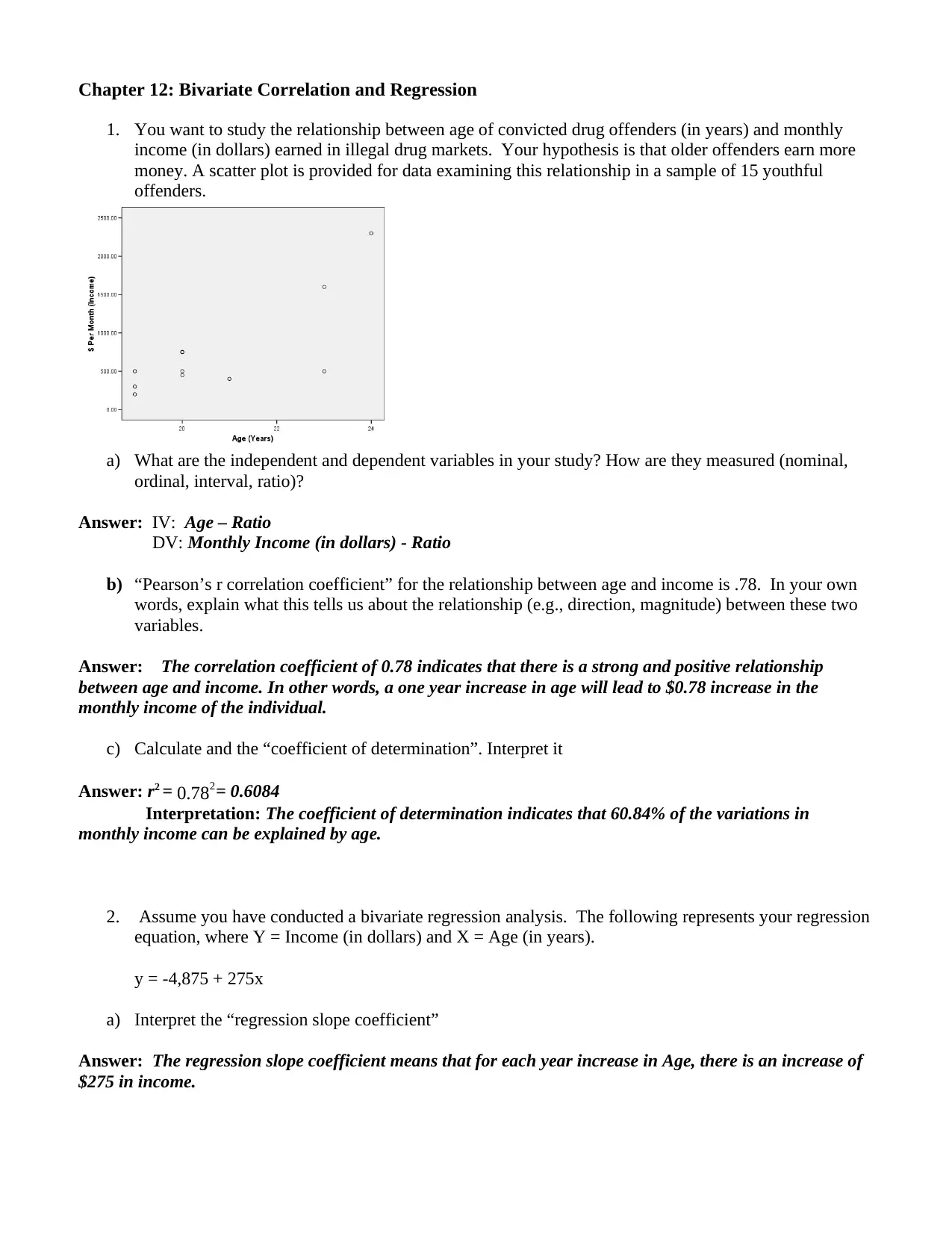Analysis of Age, Income, and Crime: Correlation and Regression
VerifiedAdded on 2022/10/18
|2
|328
|10
Homework Assignment
AI Summary
This assignment focuses on bivariate correlation and regression analysis within a sociological context, specifically examining the relationship between the age of convicted drug offenders and their monthly income earned in illegal drug markets. The solution addresses key concepts such as identifying independent and dependent variables, determining their measurement scales (nominal, ordinal, interval, ratio), and interpreting the Pearson's r correlation coefficient. It explains the direction and magnitude of the relationship between age and income, calculates and interprets the coefficient of determination, and analyzes the regression equation to understand the regression slope coefficient and predict income based on age. The assignment also includes hypothesis testing involving two and three population means, including the relationship between impulsivity and criminal offending and the relationship between prison security levels and the number of prior offenses. The solutions provide detailed explanations and calculations to support the analysis of the provided data.
1 out of 2








![[object Object]](/_next/static/media/star-bottom.7253800d.svg)